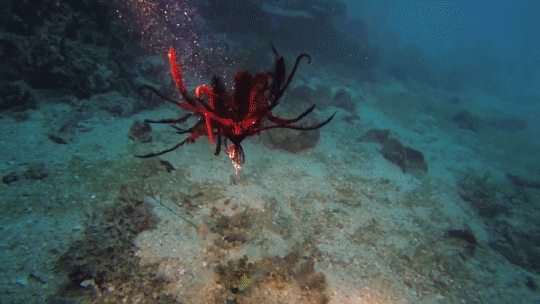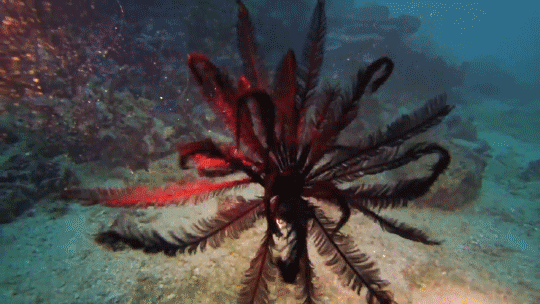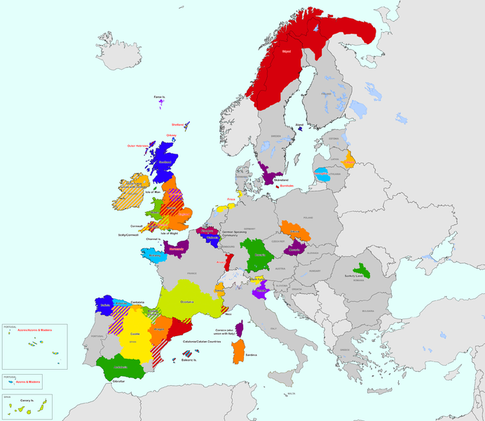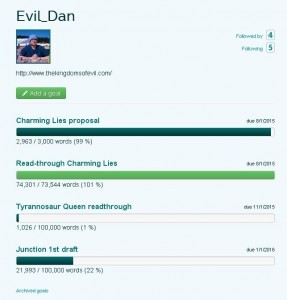Daniel M. Bensen's Blog, page 85
August 16, 2015
A Swimsuit with Tulips
Pavlina’s favorite Bulgarian children’s song is…a bit disturbing really.
Sung to the tune of “Yellow Polka-dot bikini,” it goes like this:
Kogato s teb se pazhozhdam do plazha – When I walk around the beach with you
Razbiram kolko si vlyuben vav men – I see how much you’re in love with me
I mnogo iskam na vsichki da kazha – And I very much want to tell everyone
Che ti si samo za mene roden – That you were born only for me
Da, da, da, da tova ne e shega – Yes, yes, yes, yes this isn’t a joke
Zashtoto znam, che drugite momcheta nyamat banski na laleta – Because I know that other boys don’t have swimsuits with tulips on them
Nyamat tvoite sini ochi – They don’t have your blue eyes
I sega shte ti priznaya, s teb obicham da igraya – And now I will admit I love to play with you
Ti si printsa na moyte mechti – You are the prince of my dreams
Da, da, da, da tova ne e shega – Yes, yes, yes, yes this isn’t a joke
Kogato s tebe otivam na kino – When I go to the movies with you
Ekrana svetva i v nego si ti – The screen lights up and you’re in it
I znaya pak shte sam tvoya lyubima – And I know again I’ll be your love
Zashtoto mene canuvash, nali? – Becuase you’re dreaming of me, aren’t you?
Da, da, da, da tova ne e shega – Yes, yes, yes, yes this isn’t a joke
Zashtoto holivudskite momcheta nyamat rizi na kareta – Because Hollywood boys don’t have plaid shirts
Nyamat tvoite beli zabi – They don’t have your white teeth
I sega shte ti priznaya, s teb obicham da igraya – And now I will admit I love to play with you
Ti si printsa na moyte mechti – You are the prince of my dreams
Da, da, da, da tova ne e shega – Yes, yes, yes, yes this isn’t a joke
Kogato sutrin zakusvam sas mama – When I have breakfast with mommy
Otnovo znam, che si mislish za men – I know again that you’re thinking of me
Povyarvay prosto spacenie nyama – Know that there is just no escape
Zashtoto ti si za mene roden – Because you were born for me
Da, da, da, da tova ne e shega – Yes, yes, yes, yes this isn’t a joke
Zashtoto znam, che drugite momcheta nyamat banski na laleta – Because I know that other boys don’t have swimsuits with tulips on them
Nyamat tvoite sini ochi – They don’t have your blue eyes
I sega shte ti priznaya, s teb obicham da igraya – And now I will admit I love to play with you
Ti si printsa na moyte mechti – You are the prince of my dreams
Da, da, da, da tova ne e shega – Yes, yes, yes, yes this isn’t a joke
Shte pochakam da poracna – We’ll wait a little bit to grow up
I za teb shte se ozhenya – And I’ll marry you
Shte zhiveeme prekrasno – We will live splendidly together
Tsyal zhivot shte badesh moy – Your whole life you will be mine!

August 15, 2015
Book Review: What if
What If?: Serious Scientific Answers to Absurd Hypothetical Questions
by Randall Munroe
I promised myself I would write a review for every five-star book I read, so here I go.
I am a huge fan of XKCD, which should mean I wouldn’t like this book, since I read most of its content on the XKCD website. I’m also not a huge fan of Will Wheaton as a reader. Plus, with the audiobook, I missed all the pictures. And yet, somehow, I loved it.
Hearing Munroe’s insane physics (and biology, and sociology) scenarios rather than reading them proved to be addictive. The funny, disturbing thought experiments built up, and I found myself imagining force lines surrounding the people and objects around me. In my work as a science fiction author, I started looking up things like the Reynold’s number equation, so I could make sure my flying crinoids could actually fly (don’t worry, they can). That’s what science fiction is supposed to do, after all. Keep us dreaming.

August 13, 2015
Flying crinoids!
I think this thread on tumblr is ready to mirror here.
 See that swimming crinoid? Look at how those arms undulate! Lovely! How can we get something like that to work in air?
See that swimming crinoid? Look at how those arms undulate! Lovely! How can we get something like that to work in air?
Exxos-von-Steamboldt recommended lifting gas (for example hydrogen), which started a great discussion on Gert van Dijk’s work on hydrogen balloon-animals on his Fuhara website. Long story short, for hydrogen ballooning to work, the animal needs to be huge, and I’m not sure I’m ready for huge flying crinoids. Also, eh, balloon animals have been done.
So what can we do to get this thing behaving in air like it does with water? Why, fiddle with its Reynold’s Number, of course. “R = Vc / νwhere V is the flight speed, c is the chord, and ν is the kinematic viscosity of the fluid in which the airfoil operates, which is 1.460×10−5m2/s for the atmosphere at sea level.”
Then I screwed up the calculations and Turbofanatic rescued me.
You can follow the link to see the numbers, but basically, in order to move in air in the manner of the above gif, is to make those flailing arms either 14 times faster or 14 times wider (or some combination thereof).
But wait, there’s more! Turbofanatic reminded me that Reynold’s number isn’t the only thing to worry about here. That swimming crinoid is just a bit denser than water. In order to work the same way, our flying crinoid has to be about as dense as air. One way to do that is boring old gas bags (although they wouldn’t necessarily have to be filled with hydrogen or some other lighter than air gas. A big hollow beach-ball body would work too, it would just have to be large). Another is something totally crazy like an animal that uses some low-density gas as a solvent rather than water.
But I’m going to split the difference and ramp up the cool with…
Aerogels.
SEAgel makes an aerogel out of agar (a jelly-like complex sugar derived from seaweed) by removing the water through freeze-drying. An organism can’t freeze-dry itself (or if it can, I shall leave exactly how as an exercise for the reader), but it can draw the water out of its internal tissues chemically. Then we’re left with a shell of aerogel, which would be useful as insulation (probably how it evolved in the first place), protection from predators, and the best density-reduction this side of hydrogen gas. An aerogel shell (aeroshell?), if big enough, would reduce the overall density of the organism to that of air, the same way the crinoid is about as dense as water.
And we could have our fluttering crinoids.

August 9, 2015
102 Dinosaurs! with Emily Willoughby
http://www.thekingdomsofevil.com/wp-content/uploads/2015/07/102EmilyAug10.mp3
I’m talking with scientific illustrator Emily Willoughby about Dinosaurs! Creationism! and Evolutionary Psychology!
Dinosaurs are cool!
Yi qi, the very bizarre dinosaur with bat-wings
Maniraptors, specifically dromaeosaurs, which had feathers, and might have been secondarily flightless
Balaur bondoc, the flightless climbing omnivorous bird, closer to modern birds than Archaeopteryx, with an enlarged hallux.
Zhenyuanlong suni, a dromaeosaur with motherflippin WINGS, people (PDF)
The world as you know it has changed!
The Fluffosaur Singularity is come! And there came upon the land the Great Enfluffening. The beasts of the field burst forth in fluffiness and many tears were shed into their luxuriant pellage!
Also her book God’s Word or Human Reason: an inside perspective on creationism.
Broad outlines of evolution and the (not particularly effective) attacks on Christianity
It’s okay to be Christian and believe evolution.
Schools in the US teaching Intelligent Design/Creationism
Ignoring radiometric dating is dangerous and silly.
Pat Robertson denies the earth is only 6,000 years old.
People are not going to change their minds when they’re bullied.
Psychologists agree (PDF)
Everyone likes an echo chamber
The heritability of religiosity (PDF)

August 6, 2015
Bad Fences
In 1948, the Hague Congress met to determine the future of Europe, and how to avoid another devastating war. Robert Schuman’s plans to strengthen ties between France and Germany being dismissed as ridiculous, the Congress settled upon a technological, rather than economic, solution to the problem.
Force field technology was originally developed by the Soviets as a defense against American nuclear weapons, but was quickly used to reinforce the western border of the new Warsaw Pact. When plans for the technology leaked, western nations erected their own Field stations along their side of the Warsaw Pact border, severing communication with Eastern Europe by ground, air, or radio.
Western European Fields were less uncompromising, leaving open corridors at border crossings too small to push an army through. War in Europe had become impossible.
The domestic use of Field technology was originally supposed to be limited to crow-control and strictly temporary. However, after the partition of Belgium in 1967, the use of Fields to separate antagonistic regions within European states became more common. In the name of preventing civil war, the 1960s and 70s saw the “hermetization” of Flanders, Wallonia, German Belgium, Alsace, Catalonia, Euskal Herria, Samiland, Galicia, Brittany, Occitania, Normandy, East Frisia, Frisia, Andalusia, and Scotland.
The hermetisization Macedonian Greece and Albanian Greece (in addition to the partitioning of Turkey into more than five parts) raised some alarm, as these countries were seen as strategically important border states with the Soviet Sphere. However, due to the fact that military cooperation between the western European states was impossible, and that absolutely nothing had been heard from the Warsaw Pact nations for nearly a decade, no action was taken.
By the mid 1970s time, European economies had been moribund for a decade, civil infrastructure was breaking down, and politics became increasingly nationalistic and divisive. Separatist were given free reign, dividing formerly large states into enclaves along by ever-more-fine ethic divisions. Early “auto-hermetized” regions included Franconia, Sleswick-Holsatia, South Tyrol, Aragon, Cantabria, Castile, Leon, Olivenza, Asturias, Jura, Ticino, Cornwall, Wales, and Wessex. Surely more regions followed, but here the historical record becomes patchy.
It is unknown, for example, whether cities such as Venice, Geneva, and London intentionally auto-hermetized, or whether they were simply cut off when all of their surrounding hinterlands threw up borders. Clearly, there were not enough resources within these hermetized cities to sustain their populations.
De-hermetization was a slow and patchy process. Smaller enclaves de-hermetized first, as they lost the skills and resources to keep their Field generators operational. Many promptly re-hermetized, or were re-hermetized as still-functioning states threw up walls to protect themselves from starving refugees. It was not until the late 1980s that any tracts of territory larger than 30,000 square kilometers emerged, usually inhabited only by scattered subsistence farmers.
Clearly, something had to be done. The North American Territorial Operation (NATO) extended its protection over re-emerging Europe, organizing relief, re-building communication and transportation networks, and gunning down anyone who gets their hands on a working Field generator. The goal is the produce a unified, peaceful, stable Western European state by 2020, when our calculations indicate that the Field around Eastern Europe will fail, and we will have to deal with whatever waits on the other side.

August 2, 2015
Irons in the Fire
Phew! July! That sure was a month, wasn’t it?
You can check out my progress here (sorry, I think it requires a login).
I finally finished Charming Lies, not just one more draft or some other milestone, but really the whole thing. It’s with my agent, where it will remain until she either sells New Frontiers or until January 2016. I actually like Charming Lies a lot, but what I don’t like is the process by which I wrote it, six months late and with hours of agonizing indecision. No more pantsing for me!
The next project coming down the chute is Junction, which will hopefully have a first draft done by January and a final draft ready by this time next year. That all depends on whether I can figure out how to more efficiently write and outline.
I’ve also got Petrolea (novella) and Lords of the Earth (short story) out and looking for homes. My goal this year is to have my name out there on SOMETHING, who cares what.
And further to that goal, I’m hereby officially announcing my plans to get back into self-publishing with Tyrannosaur Queen in December. I’ve got a checklist and everything.
And if you want more updates, why not sign up to my new-as-of-yesterday mailing list? Eh? Ehhh???
August is going to see my output drop a bit, though, since we’re going to have another baby 

July 30, 2015
Eureka!
In movies, science is too often depicted as the realm of mad geniuses working alone to solve specific problems with bursts of inspiration. It isn’t. But what if it was?
What if scientists all over the world suddenly had insights leading to breakthroughs with immediate applications for their personal problems?
Diseases get cured. A force field protects my lunch from those damn thieving grad students! Wait until the grant committee sees my hypnosis ray! I’m sure to get my funding. Or I could just use my new technique for transmuting lead into gold. Now all I have to worry about is my rival Dr. Willis at MIT, the asshole. I just know he’s working on a death-ray. Better finish mine first, just in case.

July 28, 2015
Talking and Walking
Here’s a fun thought experiment from Steven Cox: drop a bunch of colonists who all speak the same language on a planet and let them stew for a few centuries. Come back later and count how many languages they now speak. What can we expect?
Well, in general I’d say these are the things that tend to make languages diverge:
1) time
2) high population
3) lack of writing or recorded language (writing makes language more conservative)
4) lack of communication between communities
5) contact with speakers of other languages (not a problem in your scenario)
6) a sense of community identity
7) a poor relationship with their cousins across the border
So your settlers land on a planet and and all of their kids speak English (or whatever). The settlement grows until it’s about 200 people (Dunbar’s number) at which point it fissions and some families leave to start their own settlement.
Now you have two settlements. They swap people and information, but within a generation, speak with recognizably different accents. This process continues until you have a dialect continuum, with people in a given settlement able to understand everyone in neighboring settlements, but unable to understand people at three or four degrees of remove.
Transportation and information technology (books, airplanes, phones, the internet) will slow this process down, but unless these people have teleporters, geography will still play a role. Children talk most with the people who live in their home towns, and it’s when you’re a child that you develop your personal language.
Politics will play a role, too. If one language community closes its borders to the people and media from another community (like North and South Korea) differences will mount up faster. On the other hand, a wealthy, powerful, influential speech community will erase differences as people imitate it (like American English from the 1950s to the 1990s).
A good real-world example of this sort of linguistic evolution might be Spanish-speaking Latin America. They all speak Spanish, but it’s been 500 years and there are significant dialectical differences between different speech communities, which haven’t always been at peace with each other.
Assume in about the same time frame our space colonists will be a little bit more linguistically homogeneous than Latin America (because of technology and a lack of any substrate languages like Nahuatl or Quechua influencing things).

July 26, 2015
101 City-building with Marshall Ryan Maresca
http://www.thekingdomsofevil.com/wp-content/uploads/2015/07/101MarshallJuly27.mp3
I’m talking with Marshall Ryan Maresca about A Murder of Mages, out now!
The other (not first) book set on this world, The Thorn of Dentonhill
Some guy named Sir Terry Pratchett did something like that with Discworld.
Studying the Liberal (Dark) Arts
Marshal Ryan Maresca’s 12 step story program
Try fail, try fail, try succeed.
The IKEA effect, my own personal quest
Polish a world
The dreaded death spiral
Each book in the series is marketing for the others

101 City-building with Marshal Ryan Maresca
http://www.thekingdomsofevil.com/wp-content/uploads/2015/07/101MarshallJuly27.mp3
I’m talking with Marshall Ryan Maresca about A Murder of Mages, out now!
The other (not first) book set on this world, The Thorn of Dentonhill
Some guy named Sir Terry Pratchett did something like that with Discworld.
Studying the Liberal (Dark) Arts
Marshal Ryan Maresca’s 12 step story program
Try fail, try fail, try succeed.
The IKEA effect, my own personal quest
Polish a world
The dreaded death spiral
Each book in the series is marketing for the others










